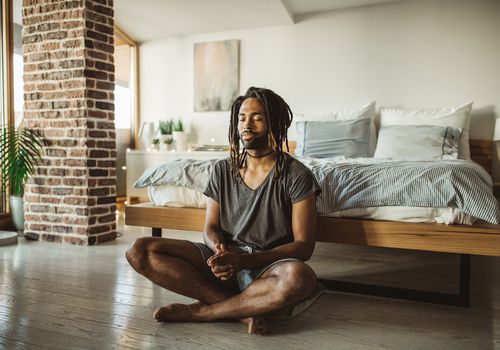
Conscious breathing can be a valuable tool for calming yourself when you feel stressed or anxious. At some point or another almost all of us have heard the old saying, “slow down and take a deep breath.” This, however, is not always easy to do when we are anxious. And, if we try to take a deep breath when we are already tense, our body can react against the effort and cause anxiety to increase. So what do you do?
The answer is practice! Conscious, or active, breathing is a learned skill that develops over time with repeated practice. The more you practice, the easier and quicker your body and mind will respond to the intentional breathing. We recommend the following steps.
- Sit on a chair so that your back is not supported and your feet are firmly touching the ground.
- Place the center of one hand one your breast bone so that your thumb and forefinger each touch one collar bone; place the center of your other hand over your belly-button.
- Close your eyes.
- Follow the natural rhythm of your breath. Initially, just follow the rhythm and observe. After 4-5 breaths, start counting how long it takes to for the air to come in and how long it takes to go out. Note which hand is moving first. As your breathing relaxes, the hand on your stomach should move first.
- Once you know the in-count and the out-count, try to gently extend the in-count by one and extend the out-count by the same amount. For example, if you are counting to three on both the in and out, then try to make it four. The important thing is to ease into a slightly deeper breath gradually. If extending the count by one causes you to become tense, then go back to your natural rhythm for a few breaths, and then try the same process over only extending each movement by a half-count.
- The goal is to gradually build up to where you are breathing both in and out to a count of five each, where each number in the count takes approximately one second. So, you are breathing in for five seconds and out for five seconds, approximately.
Keys to remember:
- No matter what you have heard before, do not hold your breath. You are trying to be smooth all the way through, including transitions.
- Practice! Start with 5-10 minutes twice daily.
- Breathing in the manner described above creates a pace of 6-7 full breath cycles per minute, which is associated with the body and mind becoming relaxed.
